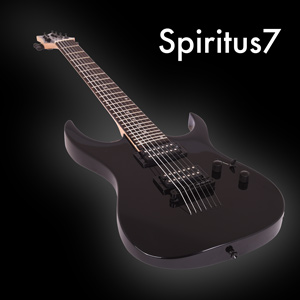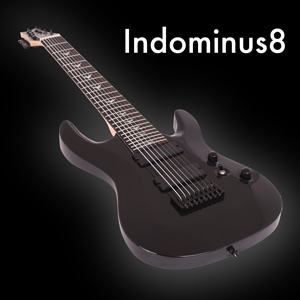Extending Your Range - 7 & 8 String Guitars
Author: Ian Bush Date Posted:30 December 2020
Many people who have grown up, listening to heavy music in the last 20 years have come to know the 7-String Guitar as synonymous with the low chugging riffs of Korn’s - James ‘Munky’ Schaffer and Brian ‘Head’ Welch. This sound extended into the genre we came to know as Nu-Metal. The guitar in this style of music was known for its intensity and low heaviness but not always for its complexity. For the decade of the 2000s, the 7-String was not seen as a more versatile version of the 6-string, but more an axe that could just get lower to grind out low heavy riffs with its low b string.
As a player, it is easy to fall into the trap of utilising the seventh string in such a way but many players might be interested to know that 7 and 8-Stringed Guitars have roots in the renaissance and have been played by virtuosos in a myriad of tunings since the 1800s in countries such as Russia and Brazil. It was in fact guitar virtuoso Steve Vai who developed the modern day 7-String with Ibanez as a means of extending his range and adding versatility to his soloing, riffing and scales, rather than just to avoid switching guitars for dropped tunings.
Today we see a new breed of player who adapted to the 7 and 8-String during the late 2000s, furthering what is possible in guitar playing by taking advantage of the high-highs and low-lows to fully utilise the extra catgut for some outstanding results.
.jpg)
7-String Guitar
The 7-String is a versatile instrument, which can be played across a variety of genres from jazz to classical to metal. This is the most logical progression after mastering the 6-String Guitar and gives the player extended range that allows for heavy or low riffing as well as the full range of the guitar for shredding and solos without the hassle of down tuning. 7-String guitars are also a perfect complement to a 5-String Bass Guitar.
Common tunings:
A,D,G,C,F,A,D B,E,A,D,G,B,E, A,E,A,D,G,B,E C,G,C,F,A,D,G
Some notable players who utilise the 7-String’s extended range:
- Steve Vai
- Devin Townsend
- Misha Mansoor, Jake Bowen, Mark Holcomb, - Periphery
- John Petrucci –Dream Theatre
- Christian Muenster, Jonas Bryssling – Spawn of Possession
- Pat Menthy
- Lee McKinney – Born of Osiris
- Matt Bellamy – Muse
- Stephen Carpenter – Deftones
- & many more…
8-String Guitar
The 8-String extends the range of players even more and is a good compromise between 7 and 10 strings. Usually tuned with 7-D and 8-A, the 8-String often drops lower rather than having a high A and players such as Tosin Abasi have incorporated a low Bass E as their top string to introduce bass playing techniques to their guitar sound. Known often as the instrument of choice for ‘Djent’ Metal musicians, the 8-String’s versatility also provides:
A full range of bass notes chromatically from A, an octave lower than the 5th guitar string up to the drop D string
Ability to play Baroque 8-course Lute pieces from original scores
Low D and A vibrate sympathetically with 2 open strings
Common Tunings:
B,E,A,D,G,B,E,A F#,B,E,A,D,G,B,E F,Bb,Eb,Ab,Db,Gb,Bb,Eb
Some notable players who utilise the 8-String’s extended range:
- Fredrik Thordendal, Martin Hagstrom – Meshuggah
- Tosin Abasi, Javier Reyes – Animals as Leaders
- Rusty Cooley – Various Artists
- Paul Galbraith – Classical Guitarist
- Charlie Hunter – Jazz Guitarist
Check out our extended range guitars here:
Thanks for reading this blog! to give you even more great content, check out our pages.
- Join our newsletter for tips, advice, new products, and great deals
- Visit our YouTube channel for some great Demo’s & Tutorials
- Our Facebook page for updates and specials and more
- Visit our website
I hope this article has helped. if you need any assistance please email:
sales@artistguitars.com.au or call us on 1300 489 816
© Artist Guitars 2020


